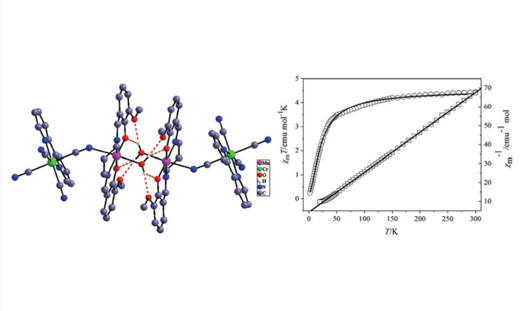Two binuclear cyanide-bridged Cr(III)-Mn(III) complexes based-on [Cr(2,2’-bipy)(CN)4]- building block: synthesis, crystal structures and magnetic properties
DOI:
https://doi.org/10.17344/acsi.2014.1154Keywords:
Cyanide-bridged, heterometallic complex, crystal structure, magnetic propertyAbstract
Tetracyanide building block [Cr(2,2’-bipy)(CN)4]- and two bicompartimental Schiff-base based manganese(III) compounds have been employed to assemble cyanide-bridged heterometallic complexes, resulting in two cyanide-bridged CrIII-MnIII complexes: [Mn(L1)(H2O)][Cr(2,2’-bipy)(CN)4]·CH3OH·2.5H2O (1) and [Mn(L2)(H2O)][Cr(2,2’-bipy)(CN)4]·CH3OH·3H2O (2) (L1 = N,N'-(1,3-propylene)-bis(3-methoxysalicylideneiminate), L2 = N,N'-ethylene-bis(3-ethoxysalicylideneiminate)). Single X-ray diffraction analysis shows their similar cyanide-bridged binuclear structures, in which the cyanide precursor acting as monodentate ligand connects the manganese(III) ion. The binuclear complexes are self-complementary through coordinated aqua ligand and the free O4 compartment from the neighboring complex, giving H-bond linking dimer structure. Investigation over magnetic properties reveals the antiferromagnetic magnetic coupling between the cyanide-bridged Cr(III) and Mn(III) ions. A best-fit to the magnetic susceptibilities of these two complexes leads to the magnetic coupling constants J = -5.95 cm-1, j = -0.61 cm-1 (1) and J = -4.15 cm-1, j = -0.57 cm-1 (2), respectively.
Downloads
Additional Files
Published
06.02.2015
Issue
Section
Inorganic chemistry
License
Except where otherwise noted, articles in this journal are published under the Creative Commons Attribution 4.0 International License
